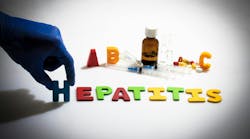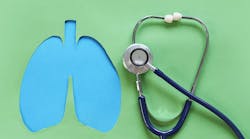As COVID-19 cases continue to climb, a CDC official said that most Americans will be exposed to the novel coronavirus this year or next.
"We do not expect most people will get a serious illness," said Nancy Messonnier, MD, the director of the Center for Disease Control and Prevention's (CDC's) National Center for Immunization and Respiratory Diseases. But Messonnier cautioned that now is the time for the people who are most at risk for serious disease, including those over 60 or those with underlying health conditions, to take precautions.
While most communities in America are not seeing widespread community transmission, Messonnier said she's advising older people – including her parents – to stock up on medications, some groceries, and plan on avoiding close contact with people who seem sick.
The CDC’s Messonnier said there were currently enough COVID-19 tests in 78 public health labs across the country to diagnose 75,000 cases of the virus. More capacity will be expected in the next 2 weeks as commercial labs begin to offer their own tests.
In other COVID-19 developments, two new studies provide more information on the incubation and spread of the disease.
In a study published in the Annals of Internal Medicine, researchers at Johns Hopkins found a median incubation period for COVID-19 of 5.1 days—similar to that of severe acute respiratory syndrome (SARS).
The Johns Hopkins study used news reports and press releases to analyze the demographics and dates and times of possible exposure, emergence of symptoms, fever onset, and hospitalization of 181 patients with confirmed COVID-19 infection outside Hubei province, China, from Jan 4 to Feb 24.
The researchers estimated the median incubation period at 5.1 days. They also found that 97.5 percent of patients who have symptoms do so within 11.5 days of infection.
In another study, the researchers said the virus can be spread before it causes symptoms, when it produces symptoms like those of the common cold, and as many as 12 days after recovery. They posted a virologic analysis of nine infected patients published today on the preprint server medRxiv.
Led by researchers in Germany, the virologic study, which has not yet been peer-reviewed, found that the novel coronavirus quickly begins producing high viral loads, sheds efficiently, and grows well in the upper respiratory tract (nose, mouth, nasal cavity, and throat).
The findings contrasted starkly with those from the 2003 outbreak of SARS in terms of viral load. "In SARS, it took seven to 10 days after onset until peak RNA concentrations (of up to 5x105 copies per swab) were reached," the researchers wrote. "In the present study, peak concentrations were reached before day five, and were more than 1,000 times higher."
According to the COVID-19 tracker maintained by Johns Hopkins University, the United States has 755 cases, including 25 deaths, as of 8 am on March 10. Both Iowa and Ohio reported their first cases of the coronavirus.
Both New York and Washington state reported a sharp increase in cases, with New York confirming 37 new cases of COVID-19, bringing the state's total to 142 cases, including 98 in Westchester County.





